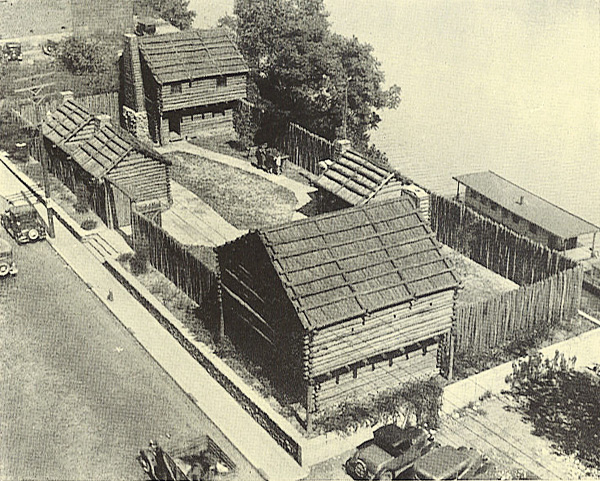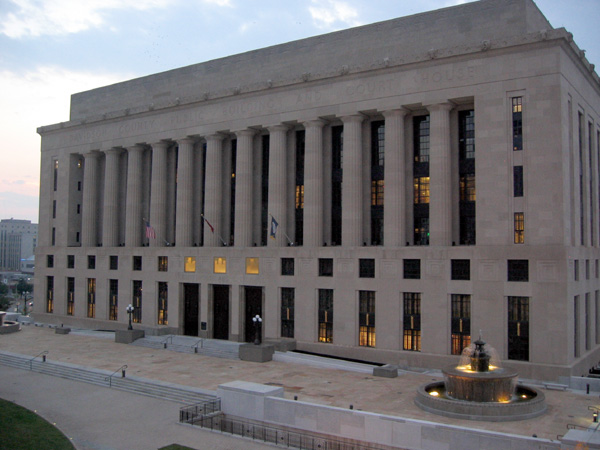Nashville has a long and rich history from its founding in 1779, through the Civil War to its modern fame as “Music City, USA”, but did you know that Nashville owes its location and very existence to a unique geological feature? Long before Marty Robbins came to the area and sang about “Cool Water” many others were singing the praises of a natural spring on the shores of the Cumberland River.
As a courtesy to my fellow cachers, I have placed the questions you need to answer at the beginning of this page, so that they do not get truncated by gps units that can only display a limited amount of text in the description. Please take a moment to read through the rest of the description to discover why this place is so special, thank you. Your quest to log this earthcache involves three parts:
1. Visit the observation deck at the posted coordinates and use the historical plaques and maps there to answer this question: What element is present in the spring just north of here that attracted a rich diversity of wildlife over 12,000 years ago.
2. Take the appropriate elevator or stairs to the lowest subterranean level and find the small waterfall near the North-West corner and take a picture of yourself and your gps with the small waterfall in the background. The level of flow can vary greatly so you may find a gusher or a trickle, but once you get to the correct area it should be obvious. If, for some reason, the bottom level is closed off you may take your photo from the next level up.
3. Travel up one level to discover the opening where this spring fed waterfall emerges from the rock wall. Calculate the rate of flow and tell me what magnitude this spring is according to the above chart.
Email all answers and upload your picture to the page to log this earthcache. Before you leave the undergound, I suggest that you take this unique opportunity to view millions of years of geologic history, then return to the plaza above to view several monuments to more recent events.
Early History
Hernando DeSoto came through the area on his explorations in the 16th century but made no settlement. He was followed by French fur traders who were the earliest tradesmen in Middle Tennessee, establishing a trading post in the 1700’s. The first of these fur traders to appear was a young trapper from New Orleans named Charles Charleville who, in 1714, built his post on a mound near the present site of Nashville. Extensive trade was carried on with Native American tribes frequenting the hunting ground. However, Charleville's station did not remain, and by 1740, Middle Tennessee was again without a single white resident. The establishment of this and subsequent posts by men of French descent gave the locality around Nashville the name "French Lick", by which it was known to early historians. In 1769, French-Canadian hunter Timothy Demonbreun built a cabin near a natural spring to use as a base of operations for fur trapping during his visits to the area.

The first permanent community of pioneers was established in 1779. A group of about two hundred settlers, led by James Robertson, left northwestern North Carolina, traveled overland for two months, and arrived on the banks of the Cumberland River near the center of present downtown Nashville on Christmas Day, 1779. They cleared the land and built a log stockade they called Fort Nashborough, a replica of which can be seen just a short distance south of the cache site, in honor of General Francis Nash, who won acclaim in the American Revolution. Robertson's friend John Donelson, along with some 60 families, including women and children, came in 30 flatboats and several pirogues down the Tennessee River and up the Cumberland, arriving April 23, 1780. They founded a new community that was then a part of the state of North Carolina. It was renamed Nashville in 1784 when it was incorporated as a town by the North Carolina legislature.
As the northern terminus of the Natchez Trace, the town quickly developed as a cotton center and river port and later as a railroad hub. It soon became the commercial center of the entire Middle Tennessee region
So now that you know how Nashville came to be founded on this spot, you need to learn a little about natural springs in general, before you explore this area to learn more about our springs.
What is a spring?
A spring is a water resource formed when the side of a hill, a valley bottom or other excavation intersects a flowing body of ground water at or below the local water table, below which the subsurface material is saturated with water. A spring is the result of an aquifer being filled to the point that the water overflows onto the land surface. They range in size from intermittent seeps, which flow only after much rain, to huge pools flowing hundreds of millions of gallons daily.
How are springs formed?
Springs may be formed in any sort of rock. Small ones are found in many places. In middle Tennessee, the largest springs are formed in limestone in the karst topography of the Cumberland Plateau. When weak carbonic acid (formed by rainwater percolating through organic matter in the soil) enters fractures in the limestone it dissolves bedrock. When it reaches a horizontal crack or a layer of non-dissolving rock such as sandstone or shale, it begins to cut sideways, forming an underground stream. As the process continues, the water hollows out more rock, eventually admitting an airspace, at which point the spring stream can be considered a cave. This process is supposed to take tens to hundreds of thousands of years to complete.
Water flow from springs
The amount of water that flows from springs depends on many factors, including the size of the caverns within the rocks, the water pressure in the aquifer, the size of the spring basin, and the amount of rainfall. Human activities also can influence the volume of water that discharges from a spring—ground-water withdrawals in an area can reduce the pressure in an aquifer, causing water levels in the aquifer system to drop and ultimately decreasing the flow from the spring. Most people probably think of a spring as being like a pool of water—and normally that is the case. But springs can occur when geologic, hydrologic, or human forces cut into the underground layers of soil and rock where water is in movement.
Springs are often classified by the volume of the water they discharge. The largest springs are called "first-magnitude," defined as springs that discharge water at a rate of at least 2800 L/s. The scale for spring flow is as follows:
| Magnitude |
Flow (ft³/s, gal/min, pint/min) |
Flow (L/s) |
| 1st Magnitude |
> 100 ft³/s |
2800 L/s |
| 2nd Magnitude |
10 to 100 ft³/s |
280 to 2800 L/s |
| 3rd Magnitude |
1 to 10 ft³/s |
28 to 280 L/s |
| 4th Magnitude |
100 US gal/min to 1 ft³/s (448 US gal/min) |
6.3 to 28 L/s |
| 5th Magnitude |
10 to 100 gal/min |
0.63 to 6.3 L/s |
| 6th Magnitude |
1 to 10 gal/min |
63 to 630 mL/s |
| 7th Magnitude |
1 pint to 1 gal/min |
8 to 63 mL/s |
| 8th Magnitude |
Less than 1 pint/min |
8 mL/s |
| 0 Magnitude |
no flow (sites of past/historic flow) |
So, now that you know all about natural springs I invite you to visit
The Nashville Metro Civic Square
In 2003, the City of Nashville undertook a multi-million dollar renovation to its Metro Courthouse complex including a 5 level subterranean parking garage and “rooftop” public plaza. The total downtown site, consisting of approximately 7.5 acres, includes a 2.25-acre state-of-the-art intensive greenroof over the parking structure. A cornerstone of the design team’s concept was the establishment of a truly civic open space that embodies the term “Public Square”, providing unfettered access to all citizens to this civic hub from which a new pedestrian connectivity to the surrounding city could be realized. This new park not only complements the renovated 1930’s art-deco styled courthouse architecture, but accentuates its grandeur from all perspectives using rich, timeless materials that are also authentic within its contemporary design interpretation.

Sensitivity to the stewardship of the environment, including water resources, is an integral part of the design. The challenge of a large 2.25 acre-sized impervious roof deck, the substrata of the park, is turned into an asset. Rainwater that falls on this area, as well as water from a sump, is harvested into a 57,000 gallon below-grade tank. Following filtration, this collected water supplies the required high-efficiency irrigation system with totally re-circulated water. Only in periods of drought is the tank topped-off by potable water. Due to this harvesting, it is necessary to employ a maintenance protocol that greatly reduces the use of chemical herbicides and pesticides — maintenance crews primarily utilize mechanical and organic weed and pest control.
Most excitingly, they have chosen to construct the publicly accessible subterranean parking structure as a free standing structure with a man-made depression under the civic square. This allows the public to view millions of years of geologic history in the stratified layers of the very bedrock that Nashville was founded on. While constructing this site several underwater streams were exposed. Rather than trying to block the flow, the designers incorporated these natural springs into the design so there are now several underground waterfalls featured in this structure. This incredible design allows you to not only view millions of years of geologic history at a glance, but also to literally see a cross-section of the geology that underlies the downtown area and much of middle Tennessee.

Thank you for taking the time to visit this beautiful location, I hope you have enjoyed this opportunity to learn more about the geologic history of Nashville.
